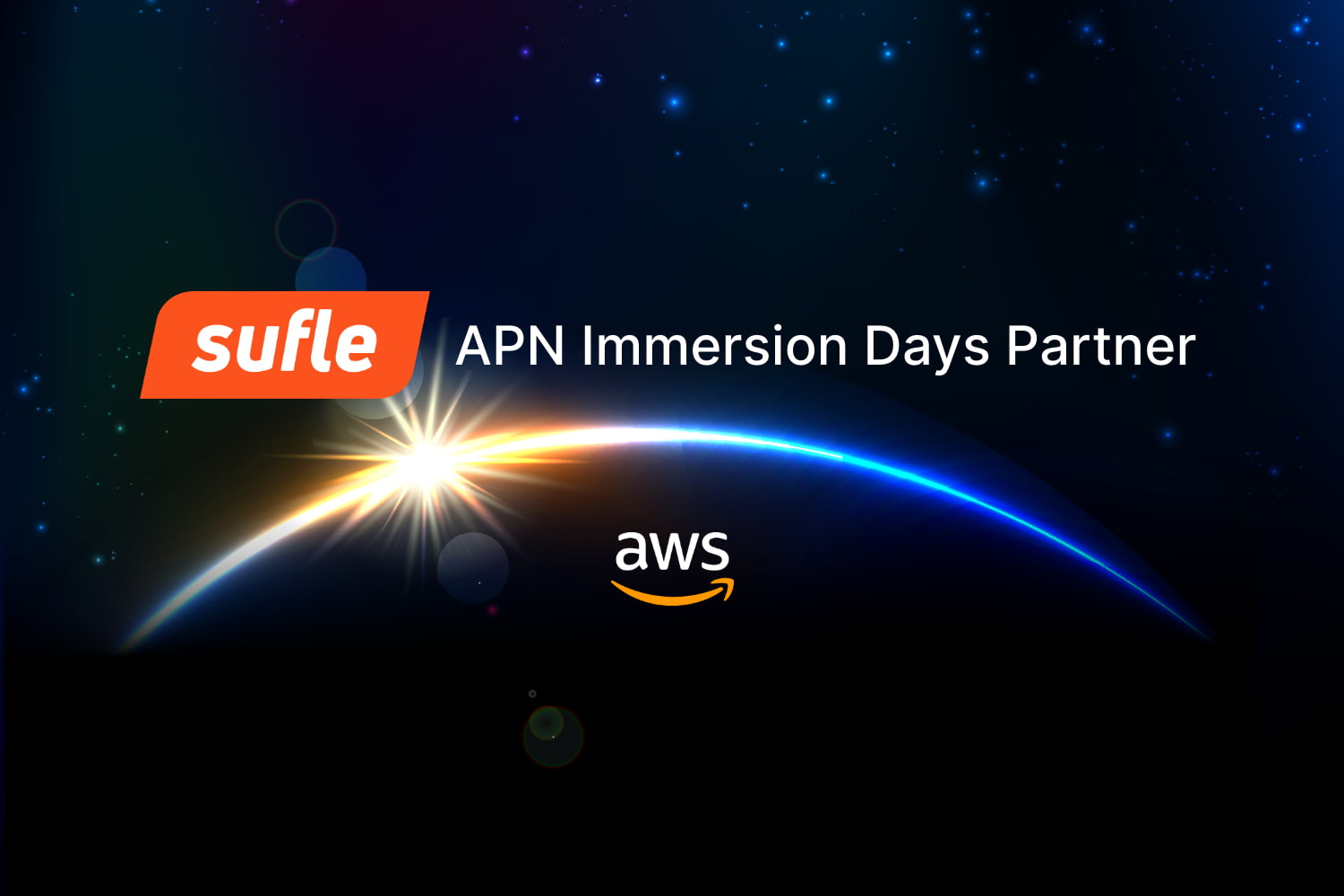Happy 15th birthday, AWS!
March 14th marks the 15th anniversary of Amazon Web Services, the day when the first generally available service, Amazon Simple Storage Service -Amazon S3 for short- was introduced. The pace of cloud computing and cloud-enabled services has been increasing exponentially ever since.
Continuously introducing and improving new services with customers in focus, AWS has been the Cloud Leader in the Gartner’s Infrastructure & Platform Services Magic Quadrant across the consecutive 10 years.1 1 In honor of the 15th anniversary of AWS, let’s look at how it all started, the evolution of cloud computing and how it transformed the business technologies.
The need for scalable computing power and increased product focus were also applied to Amazon’s very own processes back then, long before the launch of Amazon Web Services. Even today, the most common challenge across infrastructure management is that businesses do not have the sufficient time, expertise or budget to set up, manage and maintain complex infrastructures themselves, in respect to increasing competition in the market.
The need for scalability, reliability and their massive economies of scale were the main drivers of the birth of AWS Cloud and revolutionizing internet-based services, allowing developers and businesses worldwide to consume on-demand resources that could have been too expensive or expert level otherwise.
Firstly introduced in March, 2006, Amazon S3 was known to be a reliable, scalable and low-latency data storage service that enabled developers to utilize advanced storage infrastructure at low cost. Amazon S3 was one of the game changers that introduced on-demand resources, massive economies of scale and accessible IT infrastructure globally.
Back then, Amazon S3 was designed to provide 99.99% availability and multiple location storage offering, also enabling data security through access control lists. The SOAP and REST interfaces let developers utilize advanced backend storage that would be otherwise out of reach due to limited resources with a pay-as-you-go model. Today, Amazon S3 provides 11 9’s of durability (99.999999999%) on Standard tier and 7 different data classes and pricing options, where customers can trust to store their data, develop data lakes and gain insights from anywhere in the world. With the ability to store and retrieve any amount of data and easy management features, S3 enables businesses to effectively organize their data and place appropriate security measures to meet both business standards and compliance requirements for data privacy.
If you’d like to learn more about the different data classes and pricing options available in Amazon S3 and cost optimization strategies, you can check our previous blog post on Amazon S3 Cost Optimization with Storage Classes.
Also you can check out our blog post on Hosting Static Websites on Amazon S3 to see what could be achieved more with this amazing service to host your static website on Amazon S3, in minutes.
Following Amazon S3, AWS has launched many more services to date, which composes what we all know as AWS Cloud and infrastructure services today. If we look at the services launched over these 15 years, we clearly see the evolution of what the cloud enables us to do more day by day.
In the same year of Amazon S3, AWS also introduced Elastic Compute (Amazon EC2). Amazon EC2 provided on-demand computing power for developers to process and analyze their data with a pay-as-you-go pricing model. These web-based instances enabled developers to build and run applications at low cost, without having to own or maintain any hardware resources themselves. In 2006, Amazon EC2 was launched as only one instance type and one region and now we still utilize Amazon EC2, with numerous instance types based on our application needs in 25 regions.
Following on, the launch of modern databases has transformed how we utilize massive databases with maximum performance, availability and durability. There are various database solutions AWS has launched over these years, each applying to different business needs and application architectures. From managing the database instances on Amazon RDS to utilizing serverless databases without any extra effort on Amazon Aurora, businesses can collect enormous amounts of data with such database solutions on AWS and gain insights to create more value for their customers.
Apart from the storage and database services, each service on AWS keeps extending our abilities to achieve more. Today, we are not only talking about databases but also data warehouses, real-time data processing, smart insights from IoT devices, and so on. These groundbreaking advancements transform how we build, develop and maintain our applications indeed. Just think about the simplified application operations and management via the serverless technologies. The cloud keeps paving the way for easing and improving how we do, what we do and how we innovate everyday. Overall, cloud computing promises more than financial gains for businesses: all these emerging technologies and best practices allow us to innovate and improve our business value.
Today, cloud is not a matter of when, but “if” for modern businesses. The advanced and accessible technologies enable businesses of all sizes to realize their potential without upfront investment and commitment. In turn, the cloud reduces the barriers to scale and grow your business with on-demand resources and a wide range of advanced offerings on a pay-as-you-go basis.
What about the enterprises? While the economies of scale advantages and on-demand resources are still relevant for enterprise businesses, the cloud also helps enterprises to gain agility and speed to meet changing market demands, stay competitive and manage the complex operations effectively.
Reducing the infrastructure overheads, cost-effective solutions, highly available and reliable services are the key reasons that drive businesses to embrace cloud and become cloud-native. More and more businesses are modernizing their legacy workloads to leverage advanced technologies and focus on what really matters: creating value for their customers with the help of technology. The cloud is to bring many more capabilities in the future, that is for sure.
Happy 15th birthday, AWS Cloud! Excited to see what is next in the upcoming years. This week is celebrated with AWS Pi Week! AWS Pi Week will be a 4-day live, virtual event series between March 15-18, 2021. Join the events to hear from experts more about the evolution of AWS Cloud, the history of Amazon S3 and best practices. Check the official page to learn more and attend the event:
Interested in accelerating your business with cloud technologies? Book an Appointment now to plan, design and build custom cloud architecture for your business.
A fresh new graduate and specializing in marketing, Deniz is excited to learn and share her knowledge on business technologies and technology culture. With her experience in technology companies during her school years, she is always excited to learn more about how technology transforms businesses.
We use cookies to offer you a better experience.
We use cookies to offer you a better experience with personalized content.
Cookies are small files that are sent to and stored in your computer by the websites you visit. Next time you visit the site, your browser will read the cookie and relay the information back to the website or element that originally set the cookie.
Cookies allow us to recognize you automatically whenever you visit our site so that we can personalize your experience and provide you with better service.


